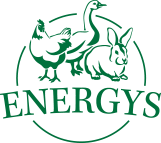Neither duck nor goose
The domesticated form of the Muscovy duck is kept in our country mainly in hobby breeding, where it is called Muscovy or Chinese duck. For commercial purposes are then intended bred hybrid combinations of so-called barbarians, which began to be imported from France about eighty years ago.
The intensive breeding of barbarians, or husokachen, began in practice only in the 1990s, when the JH Barbaria company, based in Jindřichův Hradec, regularly imported white-coloured parental combinations intended for meat fattening and liver production.
After 200 days of rearing, the flock prepares for the laying cycle, which can be very well influenced by adjusting the light regime in the house and nutrition at any time of the year. During the first laying cycle an average of 90 to 100 eggs are collected from the duck, around 80 eggs in the second and 60 eggs in the third. The incubation period for Barbary ducks is 35 days, with a pre-hatching temperature of around 37,3 °C and humidity of around 70 %. In the brood chamber, where the hatchlings are incubated for the last three days, the temperature is reduced to 36,9 °C and the humidity increases to around 80 %.
Barbary ducks are significantly more expensive to slaughter than Peking ducks. This is due to the higher requirements for ambient temperature, the almost halved laying capacity, the longer hatching period and the longer fattening period. On the other hand, barbarians are characterised by their high fat content without subcutaneous fat. The quality of the meat of this single domestic duck, which does not have the well-known mallard in its ancestry, is unmatched by the meat of other domestic duck breeds.
Mallard rearing system
The basic prerequisite for the successful breeding of mallards is a water enclosure, because they mate on water. They are prepared for laying from mid-December onwards, when the feed mixture is replaced by a laying mixture. As the day lengthens, the ducks begin laying eggs after about five weeks, and they will reach full laying after about another three weeks. The hatching eggs are incubated for 25 days at an initial temperature of 37,6 °C and a humidity of 55 %. From day 20, the temperature is reduced by one or two tenths to 37,4 °C. In the hatchery, where the eggs are transferred for the last two days of incubation, the temperature is reduced to 36,8 °C and the humidity increased to 75 %.
Shortly after hatching, the ducklings are transported to the nursery, where they spend about four weeks.Initially, the temperature in the nursery is maintained at around 30 °C, but from day 10 the ducklings are released into a grassy outdoor enclosure. Within three weeks, they get used to the outdoor temperature. As a health precaution, only older ducklings are vaccinated against botulinum toxin at 25 days of age. Standard commercial pelleted feed mixes are used to feed them, with good quality drinking water as a matter of course.
Ducks are selected for breeding in October. The basic selection criteria are their matching colour and weight, which for birds in optimum condition corresponds to 1,4 kg for ducklings and 1,0 kg for ducks. As the mallards produced are usually used to stock hunting grounds, heavier ducks are discarded because they are flightless. This also applies to ducks with colour variations that do not belong in the wild.

